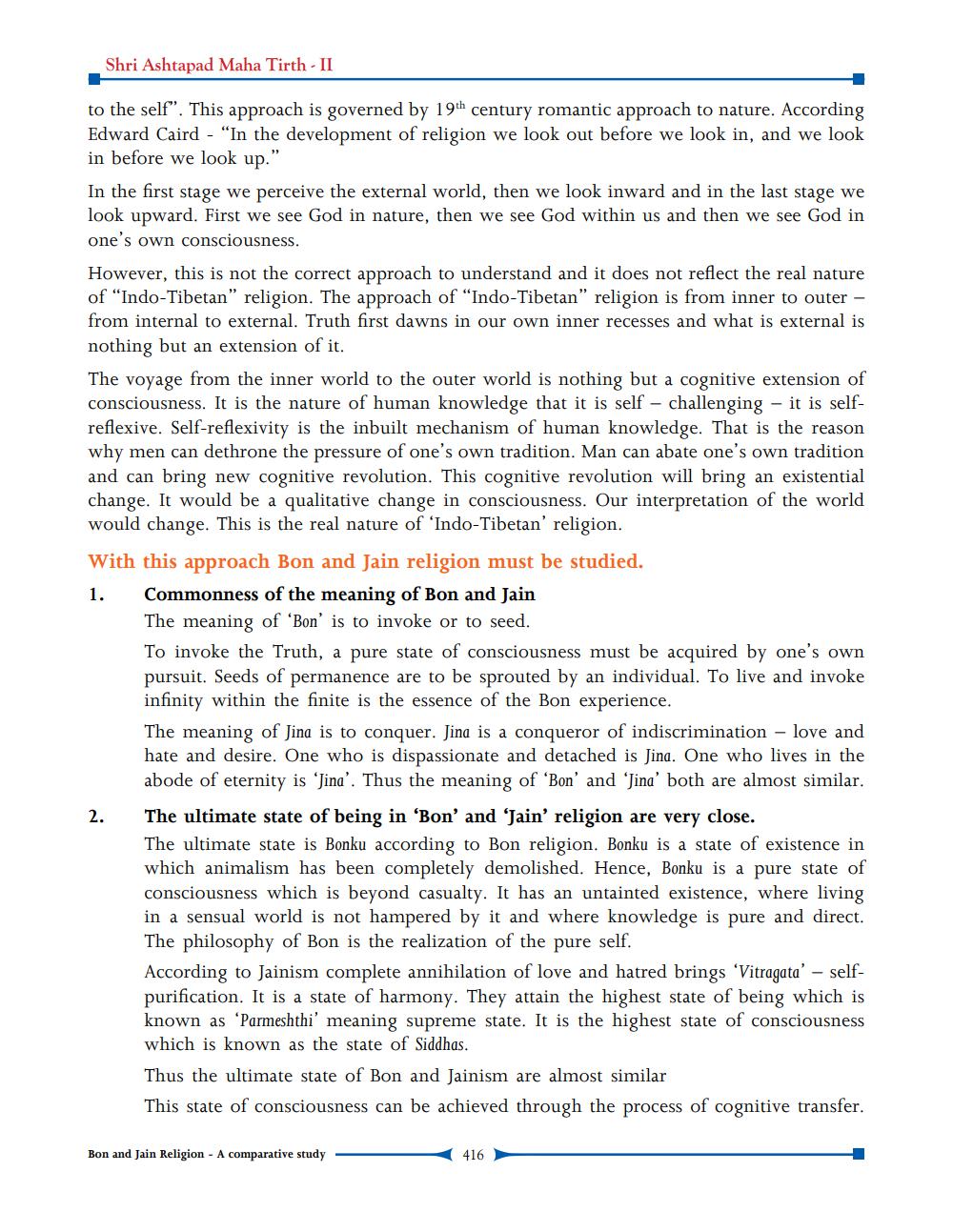________________
Shri Ashtapad Maha Tirth - II
to the self”. This approach is governed by 19th century romantic approach to nature. According Edward Caird - "In the development of religion we look out before we look in, and we look in before we look up." In the first stage we perceive the external world, then we look inward and in the last stage we look upward. First we see God in nature, then we see God within us and then we see God in one's own consciousness. However, this is not the correct approach to understand and it does not reflect the real nature of "Indo-Tibetan" religion. The approach of "Indo-Tibetan" religion is from inner to outer – from internal to external. Truth first dawns in our own inner recesses and what is external is nothing but an extension of it. The voyage from the inner world to the outer world is nothing but a cognitive extension of consciousness. It is the nature of human knowledge that it is self - challenging - it is selfreflexive. Self-reflexivity is the inbuilt mechanism of human knowledge. That is the reason why men can dethrone the pressure of one's own tradition. Man can abate one's own tradition and can bring new cognitive revolution. This cognitive revolution will bring an existential change. It would be a qualitative change in consciousness. Our interpretation of the world would change. This is the real nature of 'Indo-Tibetan' religion. With this approach Bon and Jain religion must be studied. 1. Commonness of the meaning of Bon and Jain
The meaning of 'Bon' is to invoke or to seed. To invoke the Truth, a pure state of consciousness must be acquired by one's own pursuit. Seeds of permanence are to be sprouted by an individual. To live and invoke infinity within the finite is the essence of the Bon experience. The meaning of Jina is to conquer. Jina is a conqueror of indiscrimination - love and hate and desire. One who is dispassionate and detached is Jina. One who lives in the abode of eternity is 'Jina'. Thus the meaning of 'Bon' and 'Jina' both are almost similar. The ultimate state of being in 'Bon' and 'Jain' religion are very close. The ultimate state is Bonku according to Bon religion. Bonku is a state of existence in which animalism has been completely demolished. Hence, Bonku is a pure state of consciousness which is beyond casualty. It has an untainted existence, where living in a sensual world is not hampered by it and where knowledge is pure and direct. The philosophy of Bon is the realization of the pure self. According to Jainism complete annihilation of love and hatred brings 'Vitragata' - selfpurification. It is a state of harmony. They attain the highest state of being which is known as 'Parmeshthi' meaning supreme state. It is the highest state of consciousness which is known as the state of Siddhas. Thus the ultimate state of Bon and Jainism are almost similar This state of consciousness can be achieved through the process of cognitive transfer.
Bon and Jain Religion - A comparative study
416




